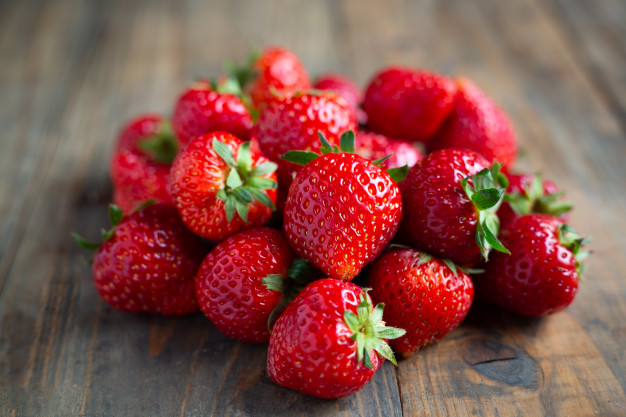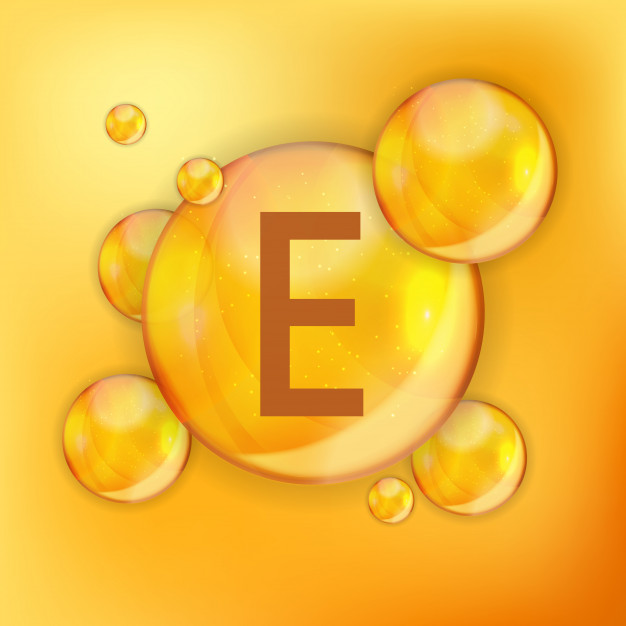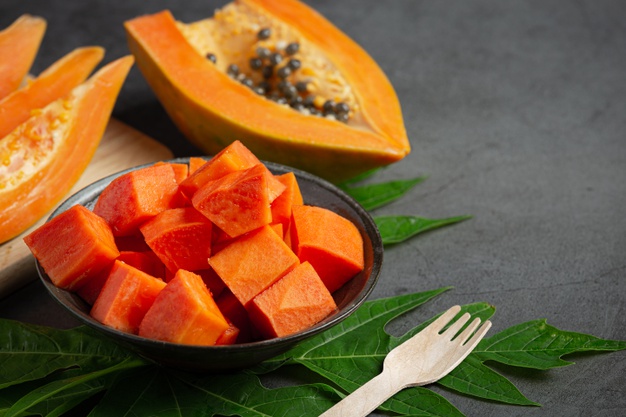Strawberry is one of the most nutritious and delicious berries especially rich in antioxidant, micronutrients as well as phytonutrients and offers numerous health benefits.
General information regarding strawberry
- It is very popular and tasty berry, originated in Europe
- Strawberry is a hybrid species of Fragaria genus in rose family
- It is red in colour
- It is sweet in taste
- It has juicy texture and a characteristic aroma
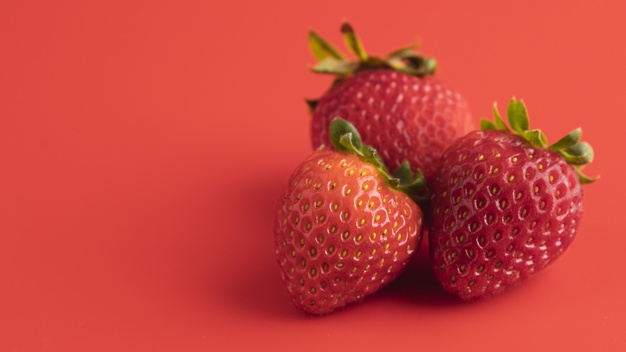
Nutritional profile
- It contains very less amount of carbohydrate. Basically it contains simple sugar like glucose, sucrose and fructose. It has low glycemic index thus its consumption is not associated with increasing blood sugar spike
- It is rich in fibre and contains both soluble as well as insoluble fibre
- It contains trace amount of protein as well
- It contains negligible amount of fat too. It contains trace amount of PUFA only and does not contain MUFA, saturated fat and cholesterol
- It contains several vitamins like Vitamin A, Vitamin C, Vitamin E, Vitamin K, Vitamin B1, B2, B3, B5, B6, B9 and choline
- It is packed with numerous important minerals, which include calcium, phosphorus, sodium, potassium, copper, iron, zinc, selenium, magnesium and manganese

Biologically active compounds present in strawberry
It contains various biologically active components, which exert potential nutraceutical effects, such as –
- Ellagic acid – it is a polyphenol, present in strawberry in high amount and exerts antioxidant activity
- Procyanidin – it also exerts antioxidant activity
- Anthocyanin – it is a pigment present in strawberry responsible for imparting bright colour to the fruit. More than 25 types of anthocyanin have been found in strawberry and they show strong cardio protective effects
- Pelargonidin – it is the main anthocyanin found in strawberry
Biological activity
Antioxidant activity
- It contains various important nutrients that exhibit antioxidant activity and protects the body from developing chronic diseases
- It helps to prevent lipid peroxidation
- It also reduces the concentration of free radicals by scavenging them thus reduces oxidative stress
Anti-inflammatory activity
- Quercetin component of strawberry is recognized as the main component that exerts anti-inflammatory activity
- It helps to reduce the concentration of C reactive protein in body thus decreases inflammation
- It also helps to improve the symptoms of arthritis
Anti-carcinogenic activity

- Ellagic acid is considered as the most important compound found in strawberry that exerts anti-carcinogenic activity
- Its antioxidant activity is also accountable for decreasing the susceptibility of developing carcinoma as it helps to destroy certain type of cancer cells and also inhibits the growth of malignant cells
- It mainly helps to reduce the prevalence of bladder, skin, lung, colon, esophagus and breast cancer
Health benefits
Role on immunity
- Consumption of strawberry is extremely helpful for enhancing overall immunity of the body as it contains significant amount of Vitamin C, which is considered as one of the most important immune boosters
- Its Vitamin C component is responsible for triggering immune boosting antibodies and also increases the level of immunoglobulins in body which are directly linked with increasing body’s resistance power
- It is also associated with promoting the health and functionality of various components that are related with immune system
- Consumption of strawberry is also effective for fighting against asthma and allergies
Role on nervous system
- Its antioxidant activities are considered as one of the most important properties that help to improve the health of nervous system by protecting every neuron from free radical induced oxidative damages hence improves brain’s activity
-
 Its flavonoid component is also responsible for improving memory and helps to prevent memory decline
Its flavonoid component is also responsible for improving memory and helps to prevent memory decline - It helps to promote autophagy, which is accountable for decreasing the risk of developing Alzheimer’s disease and Parkinson’s disease
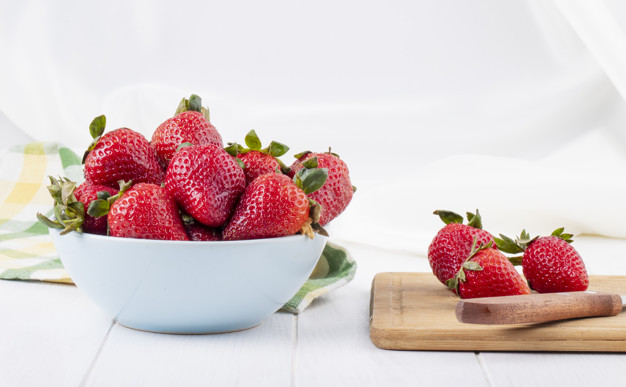
Role on vision
- Its antioxidant activity is responsible for protecting the eye from oxidative damages hence helps to decrease the risk of developing eye disorders
- It has seen that consumption of strawberry significantly reduces the prevalence of macular degeneration and cataract
- Vitamin C present in strawberry plays imperative role in strengthening retina as well as the cornea of the eye. It is also associated with protecting the lens from damages thus its consumption is thought to be very much useful for promoting vision
- It also helps to protect the eye especially the retina from the harmful effects of UV radiation
Role on oral health
- Malic acid is an important component present in strawberry acts as astringent and plays significant role in preventing discoloration of teeth
- Its consumption is thought to be very effective for whiten the teeth
Role on skin
- Consumption of strawberry is extremely helpful for promoting skin health
- Its antioxidant activity plays imperative role in protecting the skin from oxidative damages thus reduces the susceptibility of developing dermal disorders
- Anthocyanins component of strawberry also reduces oxidative stress and helps to delay the ageing process
- Alpha-hydroxy acid present in strawberry is related with eliminating dead skin cells and also helps to clean the skin
- Salicylic acid and ellagic acid of strawberry helps to reduce pigmentation as well as dark spot
- It helps to prevent acne as well by tightening the skin pores
- Its Vitamin C content is also responsible for keeping the skin healthy
- Its consumption is very beneficial for improving the complexion and tone of the skin
- It also helps to sooth irritated skin
- It plays significant role in protecting the skin from UV radiation

Role on maternal health
- Folic acid or Vitamin B9 is considered as one of the most important vitamins required during gestational period for promoting overall maternal health and as strawberry contains significant amount of folate thus it should be included in the diet of pregnant women
- Folic acid present in strawberry is also associated with promoting the growth and development of baby’s skull, brain and spinal cord
- It helps to reduces the risk of developing birth defects as well
Role on hair
- Vitamin C component of strawberry helps to promote hair growth by improving iron absorption
- It also helps to treat dandruff
- Silica component of strawberry is responsible for preventing baldness
- It helps to prevent hair falls as well

Disease preventive role of strawberry
It is considered as an important therapeutic substance, which is used for preventing various health complications like –
- It helps to prevent hypercholesterolemia by decreasing cholesterol concentration. It especially helps to reduce the level of LDL and VLDL in body
- It helps to prevent obesity. As it contains high amount of fiber thus its consumption is very effective for reducing body weight
- Its hypolipidemic activity is associated with preventing plaque formation within blood vessels thus reduces the prevalence of atherosclerosis and coronary artery diseases
- It helps to prevent hypertension as well
- It helps to improves the symptoms of type 2 diabetes mellitus
General consideration of using strawberry
- It can be consumed raw but it is better to wash strawberries properly before consumption and also wipe them until they are dry
- It can be also used for preparing various desserts, juice, chocolate and milkshake
- It can be used in ice cream too
- It can be added to salad
- It can also be used as topping substance
- It can be used for preparing jam
Risk factors

It may develop some allergic symptoms like headache, swelling of lips, tongue, throat, face and in severe condition it may cause breathing problem too.
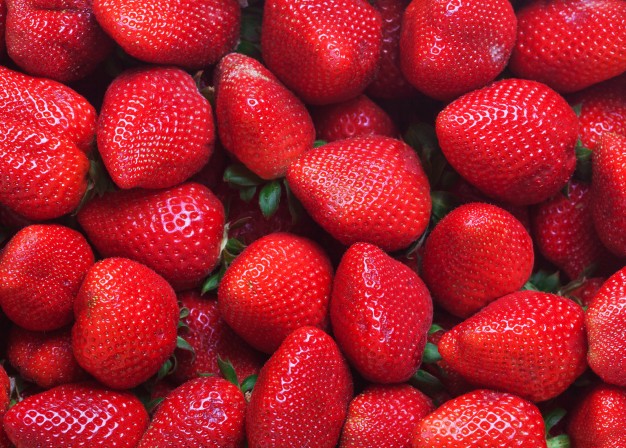
Source:
Afrin, S., Gasparrini, M., Forbes-Hernandez, T.Y., Reboredo-Rodriguez, P., Mezzetti, B., Varela-López, A., Giampieri, F. and Battino, M., 2016. Promising health benefits of the strawberry: a focus on clinical studies. Journal of agricultural and food chemistry, 64(22), pp.4435-4449.
Basu, A., Nguyen, A., Betts, N.M. and Lyons, T.J., 2014. Strawberry as a functional food: an evidence-based review. Critical reviews in food science and nutrition, 54(6), pp.790-806.
Battino, M., Giampieri, F., Cianciosi, D., Ansary, J., Chen, X., Zhang, D., Gil, E. and Forbes-Hernández, T., 2020. The roles of strawberry and honey phytochemicals on human health: A possible clue on the molecular mechanisms involved in the prevention of oxidative stress and inflammation. Phytomedicine, p.153170.
Giampieri, F., Alvarez-Suarez, J.M., Mazzoni, L., Romandini, S., Bompadre, S., Diamanti, J., Capocasa, F., Mezzetti, B., Quiles, J.L., Ferreiro, M.S. and Tulipani, S., 2013. The potential impact of strawberry on human health. Natural product research, 27(4-5), pp.448-455.
Giampieri, F., Forbes-Hernandez, T.Y., Gasparrini, M., Alvarez-Suarez, J.M., Afrin, S., Bompadre, S., Quiles, J.L., Mezzetti, B. and Battino, M., 2015. Strawberry as a health promoter: an evidence based review. Food & function, 6(5), pp.1386-1398.
Muthukumaran, S., Tranchant, C., Shi, J., Ye, X. and Xue, S.J., 2017. Ellagic acid in strawberry (Fragaria spp.): Biological, technological, stability, and human health aspects. Food Quality and Safety, 1(4), pp.227-252.
